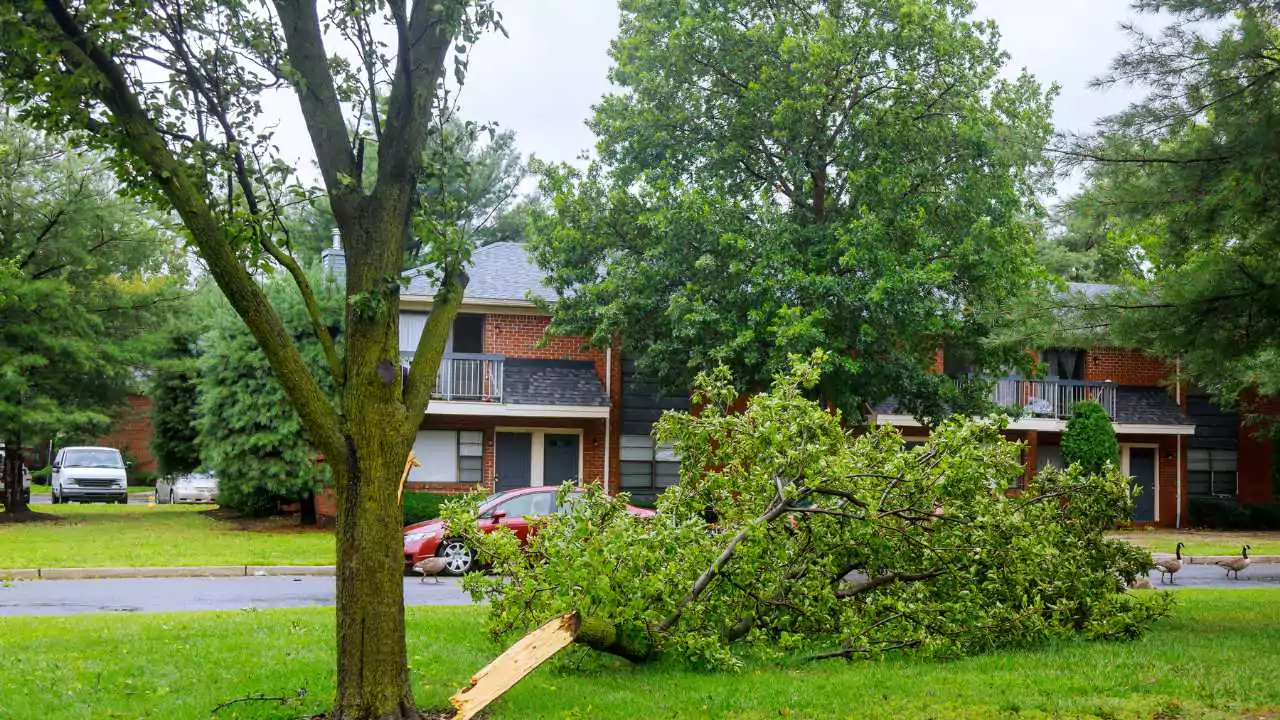Yes, homeowners insurance typically covers tree damage, but with limitations.
This means your insurance policy may help pay for repairs if a tree falls on your house or other covered structures, such as a garage or shed. However, there are certain situations where coverage might be limited or excluded altogether.
Here’s a breakdown of what is generally covered and not covered by homeowners insurance for tree damage:
What Situations are Covered by Home Insurance for Tree Damage?
Fallen Trees Damaging Insured Structures
If a healthy tree falls on your house, garage, fence, or other insured structure due to a covered peril, such as wind, hail, or lightning, your homeowner’s insurance will likely cover the cost of repairs. This includes damage to the structure itself and any belongings inside.
Damage Caused by Specific Perils
Homeowners insurance also covers damage to your property caused by certain perils, including:
- Fire: If a tree falls on your house and starts a fire, your insurance will cover the fire damage.
- Windstorms: Windstorm damage, such as a tree falling on your roof due to strong winds, is typically covered by your policy.
- Lightning: If a tree is struck by lightning and falls on your house, your insurance will likely cover the damage.
Removal of Fallen Trees
In some cases, your insurance company may also cover the cost of removing a fallen tree from your property, especially if it is blocking access to your home or poses a safety hazard. However, this coverage may vary depending on your specific policy.
When is Tree Damage Not Covered by Home Insurance?
There are several situations where your homeowner’s insurance may not cover tree damage, including:
- Negligence on the homeowner’s part: If you knew a tree was diseased or dangerous and did not take steps to remove it, your insurance company may deny your claim.
- Maintenance-related issues: If the damage was caused by a lack of proper tree care, such as trimming or pruning, your insurance company may not cover it.
- Trees belonging to a neighbor: If a tree belonging to your neighbor falls on your property, their insurance will likely be responsible for the damage, not yours.
How to File a Claim for Tree Damage to Your Home?
If you experience tree damage to your home, it’s important to file a claim with your insurance company as soon as possible. Here’s how:
- Document the damage: Take photos and videos of the damage to your property, including the fallen tree and any other affected areas.
- Contact your insurance company: Call your insurance company and report the claim. They will provide you with instructions on how to proceed.
- Understand coverage limits: Be aware of your policy’s coverage limits for tree damage. You may need to pay a deductible before your insurance company starts to cover the costs.
Preventing Tree Damage
There are several things you can do to help prevent tree damage to your home:
- Regular tree maintenance: Have a qualified arborist inspect your trees regularly and recommend any necessary maintenance, such as trimming or pruning.
- Proper pruning and trimming: Pruning and trimming trees can help to improve their health and make them less likely to fall over.
- Identifying hazardous trees and removing them: If you have any trees that are diseased, dying, or leaning dangerously, have them removed by a professional.
By taking these steps, you can help protect your home from tree damage and ensure that you are properly covered by your homeowner’s insurance.





